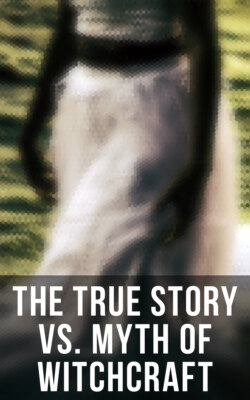Читать книгу The True Story vs. Myth of Witchcraft - William Godwin - Страница 162
На сайте Литреса книга снята с продажи.
English Law of High Treason.
ОглавлениеIt may seem strange that in a treatise concerning necromancy we should have occasion to speak of the English law of high treason. But on reflection perhaps it may appear not altogether alien to the subject. This crime is ordinarily considered by our lawyers as limited and defined by the statute of 25 Edward III. As Blackstone has observed, “By the ancient common law there was a great latitude left in the breast of the judges, to determine what was treason, or not so: whereby the creatures of tyrannical power had opportunity to create abundance of constructive treasons; that is, to raise, by forced and arbitrary constructions, offences into the crime and punishment of treason, which were never suspected to be such. To prevent these inconveniences, the statute of 25 Edward III was made.” 176 This statute divides treason into seven distinct branches; and the first and chief of these is, “when a man doth compass or imagine the death of our lord the king.”
Now the first circumstance that strikes us in this affair is, why the crime was not expressed in more perspicuous and appropriate language? Why, for example, was it not said, that the first and chief branch of treason was to “kill the king?” Or, if that limitation was not held to be sufficiently ample, could it not have been added, it is treason to “attempt, intend, or contrive to kill the king?” We are apt to make much too large an allowance for what is considered as the vague and obsolete language of our ancestors. Logic was the element in which the scholars of what are called the dark ages were especially at home. It was at that period that the description of human geniuses, called the Schoolmen, principally flourished. The writers who preceded the Christian era, possessed in an extraordinary degree the gift of imagination and invention. But they had little to boast on the score of arrangement, and discovered little skill in the strictness of an accurate deduction. Meanwhile the Schoolmen had a surprising subtlety in weaving the web of an argument, and arriving by a close deduction, through a multitude of steps, to a sound and irresistible conclusion. Our lawyers to a certain degree formed themselves on the discipline of the Schoolmen. Nothing can be more forcibly contrasted, than the mode of pleading among the ancients, and that which has characterised the processes of the moderns. The pleadings of the ancients were praxises of the art of oratorical persuasion; the pleadings of the moderns sometimes, though rarely, deviate into oratory, but principally consist in dextrous subtleties upon words, or a nice series of deductions, the whole contexture of which is endeavoured to be woven into one indissoluble substance. Several striking examples have been preserved of the mode of pleading in the reign of Edward II, in which the exceptions taken for the defendant, and the replies supporting the mode of proceeding on behalf of the plaintiff, in no respect fall short of the most admired shifts, quirks and subtleties of the great lawyers of later times. 177
It would be certainly wrong therefore to consider the legal phrase, to “compass or imagine the death of the king,” as meaning the same thing as to “kill, or intend to kill” him. At all events we may take it for granted, that to “compass” does not mean to accomplish; but rather to “take in hand, to go about to effect.” There is therefore no form of words here forbidding to “kill the king.” The phrase, to “imagine,” does not appear less startling. What is, to a proverb, more lawless than imagination?
Evil into the mind of God or man
May come and go, so unapproved, and leave
No spot or blame behind.
What can be more tyrannical, than an inquisition into the sports and freaks of fancy? What more unsusceptible of detection or evidence? How many imperceptible shades of distinction between the guilt and innocence that characterise them! — Meanwhile the force and propriety of these terms will strikingly appear, if we refer them to the popular ideas of witchcraft. Witches were understood to have the power of destroying life, without the necessity of approaching the person whose life was to be destroyed, or producing any consciousness in him of the crime about to be perpetrated. One method was by exposing an image of wax to the action of fire; while, in proportion as the image wasted away, the life of the individual who was the object contrived against, was undermined and destroyed. Another was by incantations and spells. Either of these might fitly be called the “compassing or imagining the death.” Imagination is, beside this, the peculiar province of witchcraft. And in these pretended hags the faculty is no longer desultory and erratic. Conscious of their power, they are supposed to have subjected it to system and discipline. They apply its secret and trackless energy with an intentness and a vigour, which ordinary mortals may in vain attempt to emulate in an application of the force of inert matter, or of the different physical powers by means of which such stupendous effects have often been produced. — How universal and familiar then must we consider the ideas of witchcraft to have been before language which properly describes the secret practices of such persons, and is not appropriate to any other, could have been found to insinuate itself into the structure of the most solemn act of our legislature, that act which beyond all others was intended to narrow or shut out the subtle and dangerous inroads of arbitrary power!
